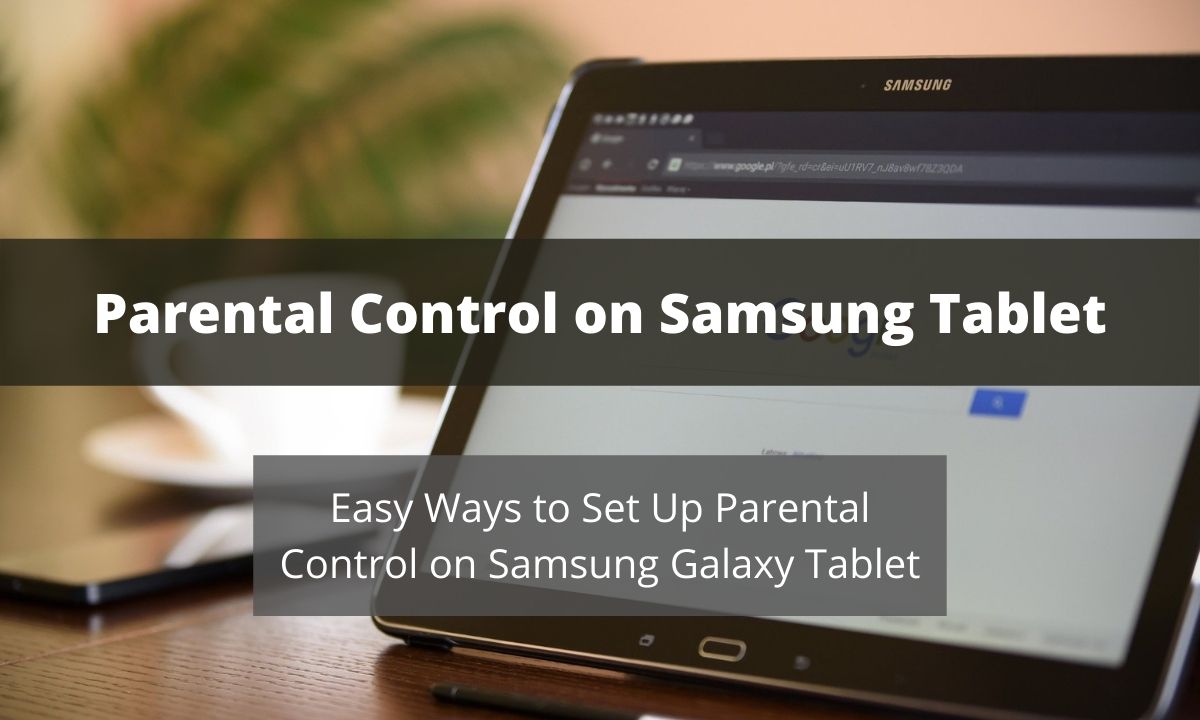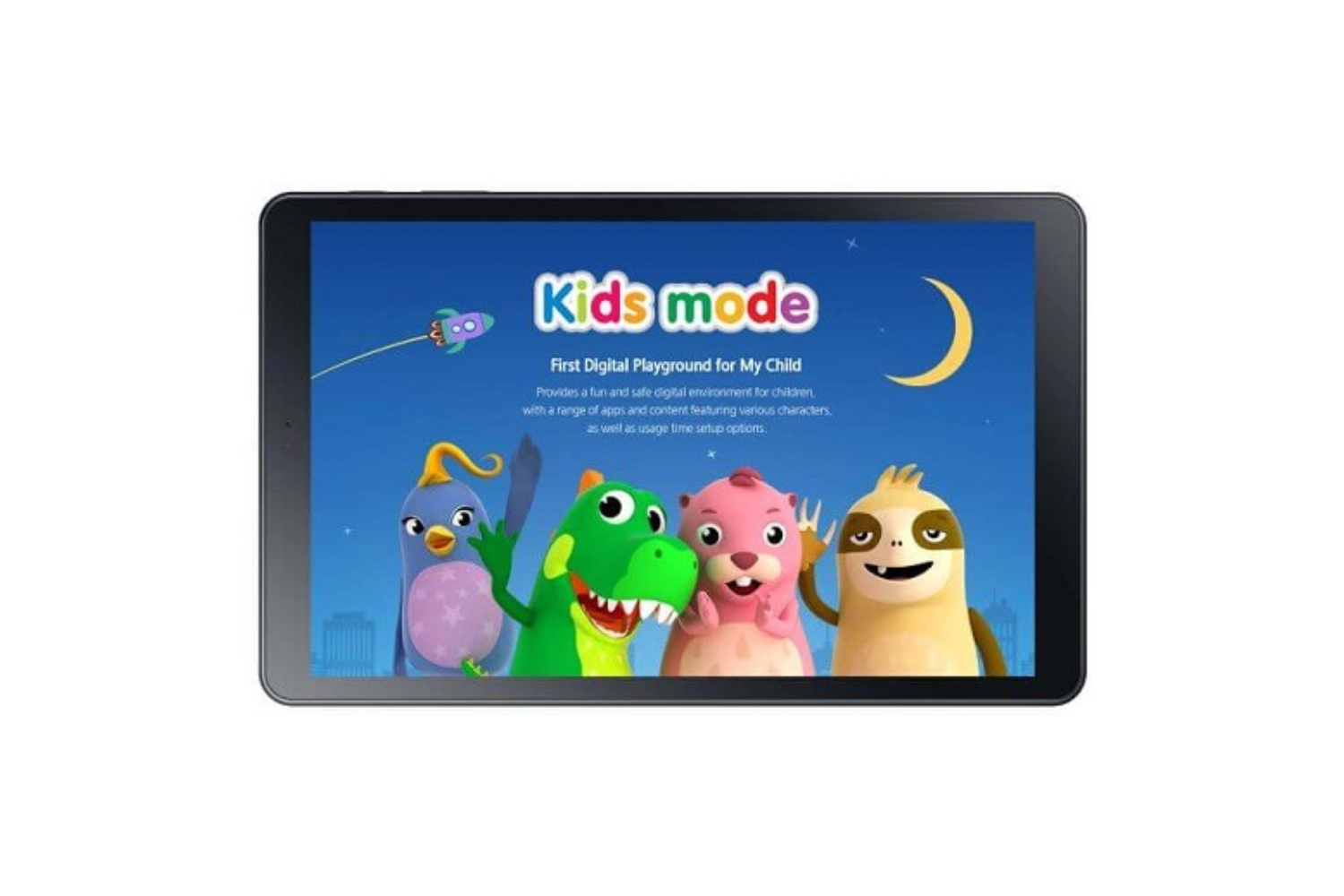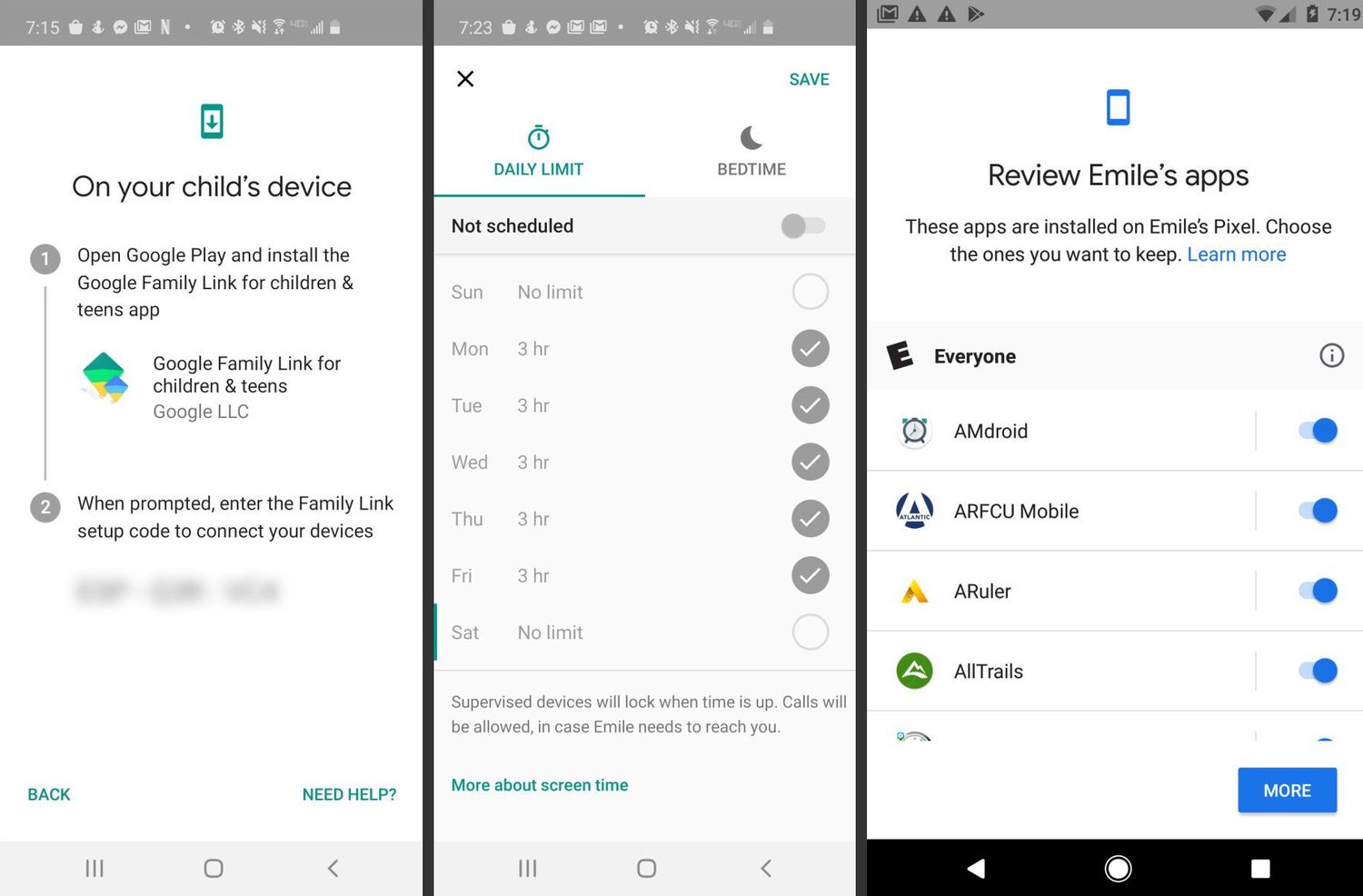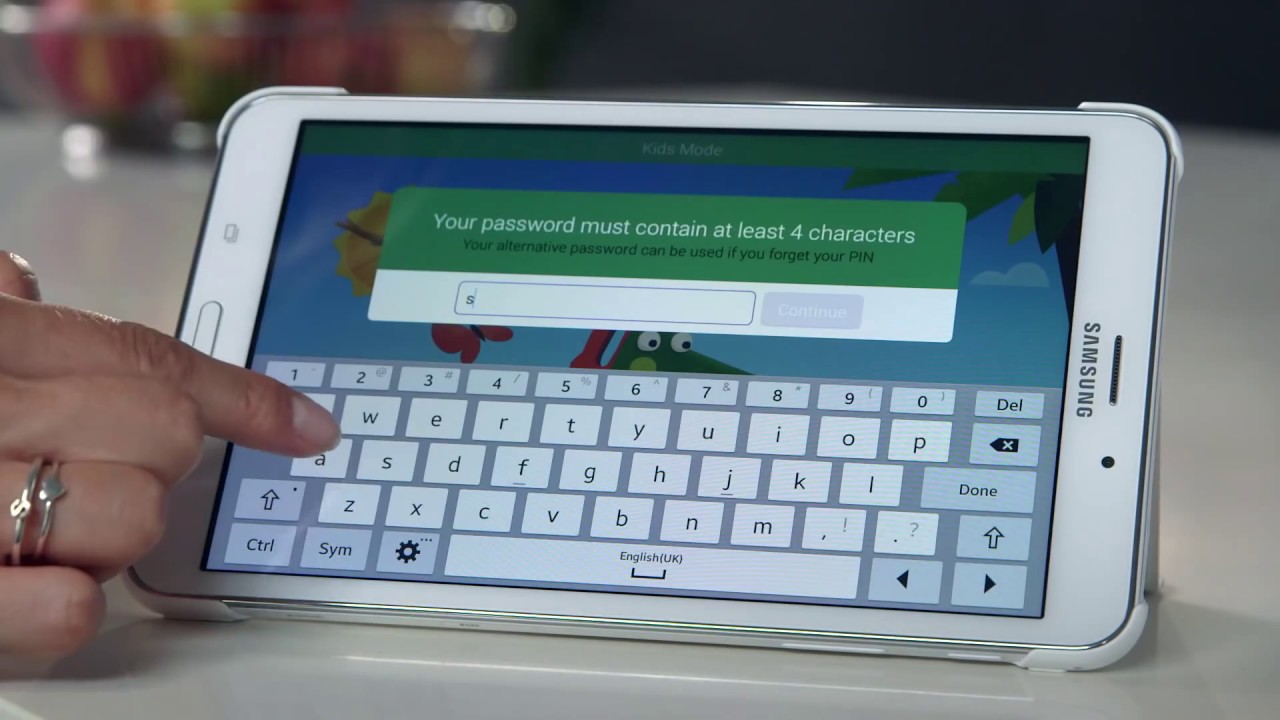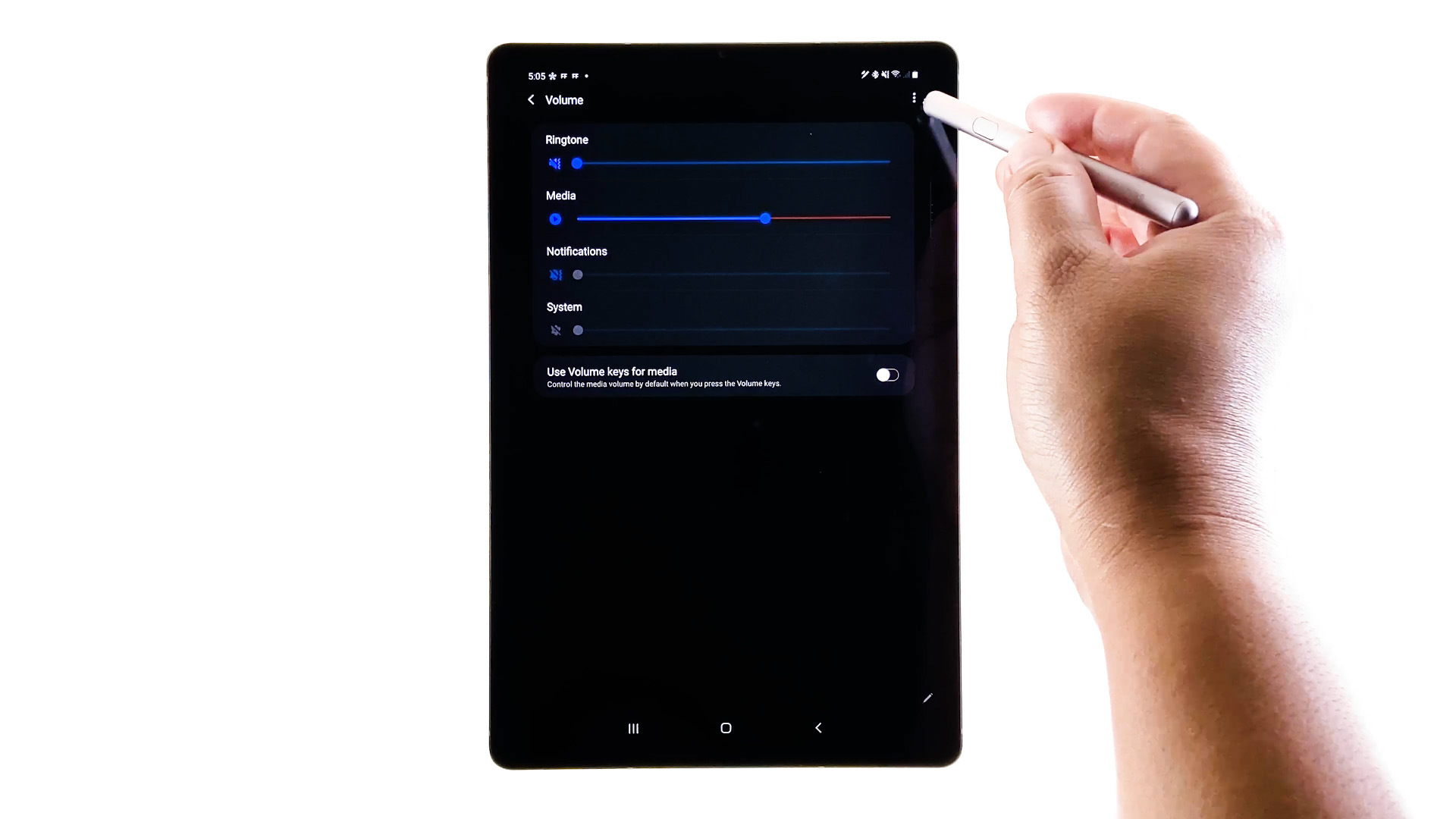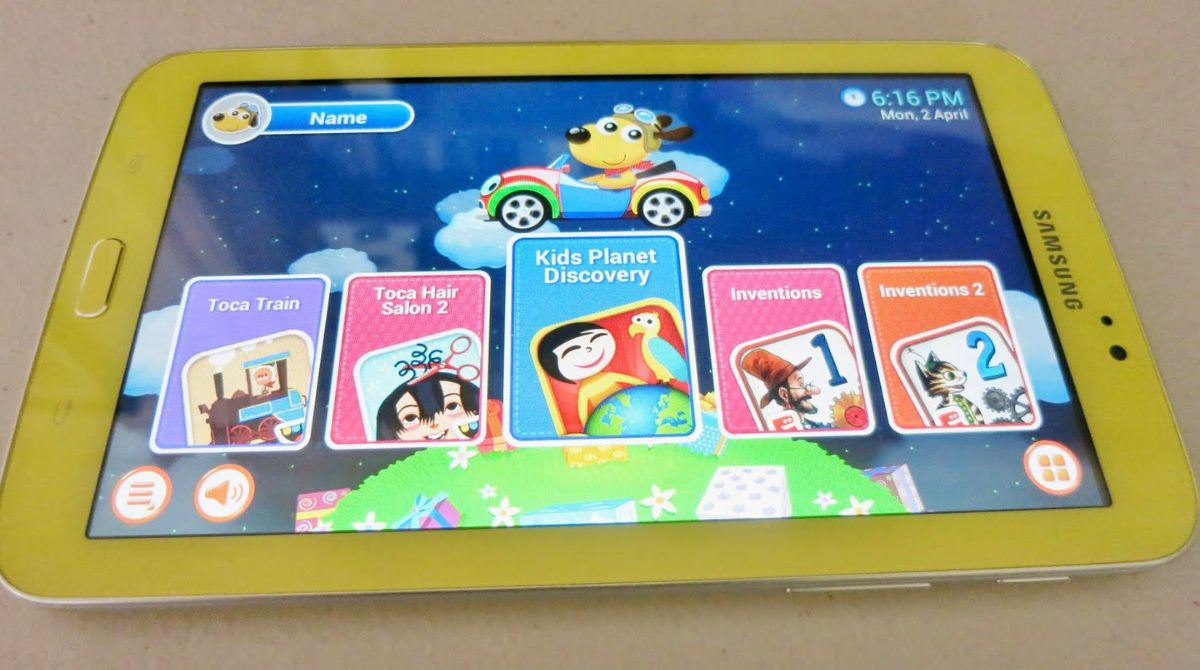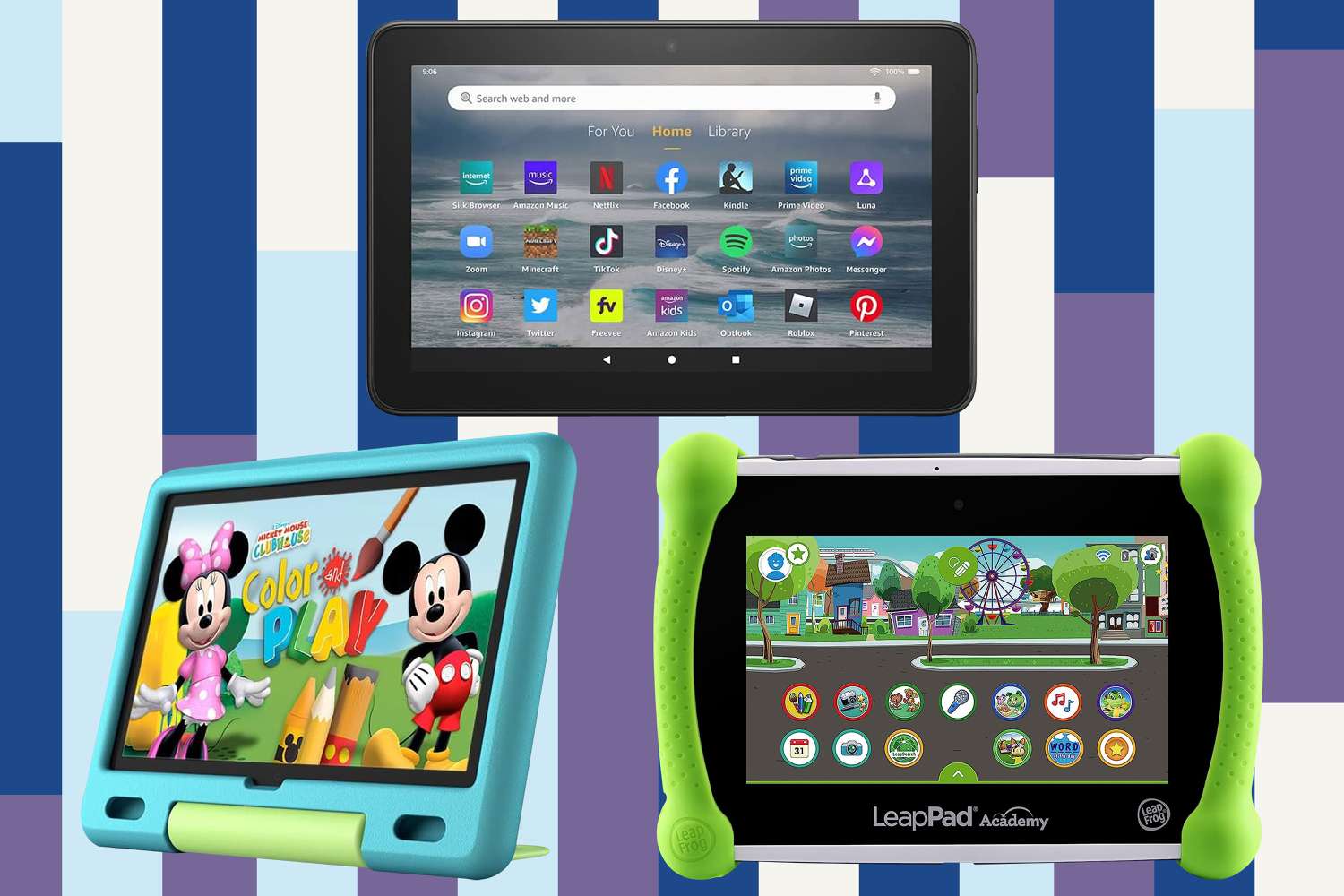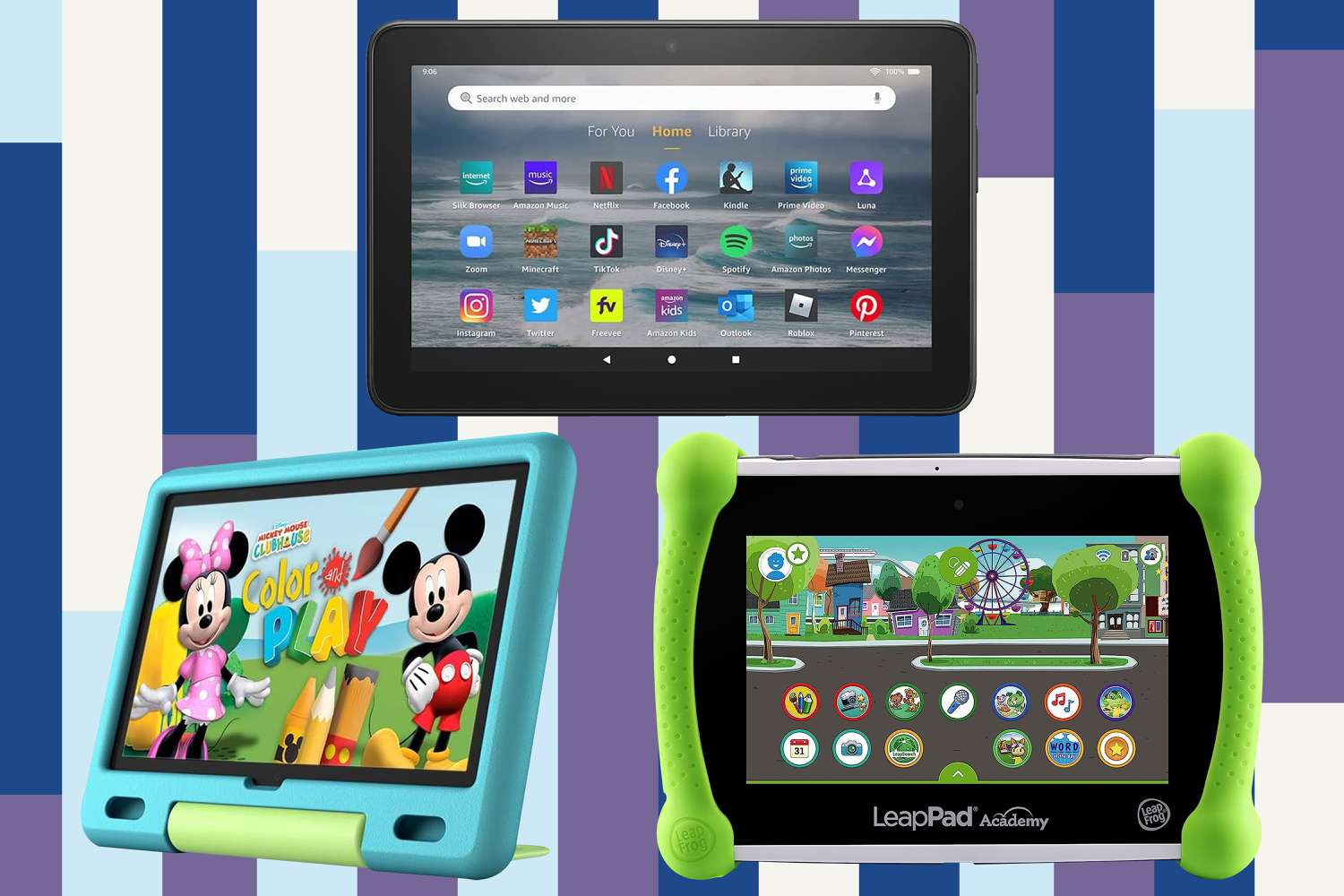Why Set Child Restrictions on Samsung Tablet?
As parents, we want the best for our children, and in today’s digital age, that includes protecting them from potential harms and inappropriate content. Setting child restrictions on your Samsung tablet is a proactive step towards creating a safe and secure environment for your children to explore and learn. Here are a few compelling reasons why you should consider implementing these restrictions:
- Control Screen Time: Excessive screen time can have detrimental effects on a child’s physical and mental health. By setting restrictions, you can manage and limit the amount of time your child spends on the tablet, ensuring a healthy balance between screen time and other activities.
- Block Inappropriate Content: The internet is full of content that may not be suitable for young eyes. Child restrictions can help you block access to age-inappropriate websites, apps, and online platforms, protecting your child from harmful content such as violence, adult material, or cyberbullying.
- Manage App Access: With a plethora of apps available, it can be overwhelming to keep track of what your child is downloading. By setting child restrictions, you can manage and approve the apps your child can access, ensuring they only use age-appropriate and educational applications.
- Limit In-App Purchases: In-app purchases can lead to unexpected charges on your credit card if your child inadvertently makes purchases within games or apps. Child restrictions allow you to prevent unauthorized in-app purchases, saving you from potential financial surprises.
- Customize Content Restrictions: Every parent has different comfort levels when it comes to the type of content they want their child exposed to. With child restrictions, you have the power to customize the level of filtering and specific content categories that you want to allow or block.
- Monitor Activity and Usage: Setting child restrictions provides you with the ability to monitor your child’s tablet usage. You can see which apps they use, how much time they spend on each app, and their overall digital behavior. This information can help you identify any potential issues and have meaningful conversations with your child about responsible digital usage.
By setting child restrictions on your Samsung tablet, you take an important step towards ensuring your child’s online safety and fostering a healthy relationship with technology. It’s an effective way to balance the benefits of digital access with age-appropriate content and responsible usage. So, let’s dive into the steps required to set up these restrictions on your Samsung tablet.
Step 1: Create a Child Profile
In order to set up child restrictions on your Samsung tablet, you will first need to create a dedicated child profile. Follow these steps to get started:
- Open the Settings: Swipe down from the top of the screen to access the notification panel, then tap on the gear icon to open the Settings menu.
- Select Users and Accounts: In the Settings menu, locate and select the “Users and accounts” option. This will vary depending on your specific Samsung tablet model and operating system version.
- Add User: Look for the “Users” or “Users and accounts” section and tap on “Add user” or “Add user or profile.” This will allow you to create a new user profile on the tablet.
- Create Child Profile: Choose the “Restricted profile” or “Child profile” option to create a profile specifically for your child. You may be prompted to set a PIN or password for parental controls.
- Configure Profile: Next, you will need to configure the child profile settings. This includes setting a profile name, selecting appropriate apps and content, and customizing restrictions according to your preference.
- Add Apps: You can now add the apps that you want your child to have access to. Tap on “Add apps” or “Manage apps” and select the apps from the provided list. You may also choose to download additional age-appropriate apps from the Google Play Store.
- Set Time Limits: To manage your child’s screen time, tap on “Set time limits” or a similar option, and specify how much time your child is allowed to use the tablet each day. You can also set different time limits for weekdays and weekends if desired.
- Finish Setup: Once you have completed the configuration and made the necessary adjustments, tap on “Finish” or a similar option to complete the setup process.
Creating a child profile on your Samsung tablet is a crucial first step in establishing child restrictions. This dedicated profile ensures that your child has a safe and controlled digital environment to explore and learn. Now that you have successfully set up a child profile, let’s move on to the next step – setting screen time limits to promote healthy device usage habits.
Step 2: Set Screen Time Limits
Setting screen time limits is an essential part of managing your child’s device usage and promoting a healthy balance between screen time and other activities. Follow these steps to set screen time limits on your child’s Samsung tablet:
- Access the Child Profile: Open the Settings menu on your Samsung tablet and select the child profile you have created.
- Tap on Restrictions: Look for the “Restrictions,” “Parental controls,” or a similar option within the child profile settings. This is where you can set screen time limits.
- Select Time Limits: Tap on “Time limits,” “Screen time,” or a similar option to access the screen time limit settings.
- Choose Daily Limit: Here, you can set the maximum amount of time your child is allowed to use the tablet each day. Simply slide the bar or enter the desired time limit.
- Set Bedtime Schedule: If you want to establish a bedtime routine with restricted device usage, choose the “Bedtime” option. Select the bedtime and wake-up time to automatically enforce screen time restrictions during those hours.
- Adjust Time Zone: If your child travels or there is a time change, make sure to adjust the time zone settings to ensure accurate screen time limits.
- Enable Bonus Time: Some parental control features may offer the option to grant “bonus time” for completing tasks or earning rewards. If available, you can enable this feature to provide additional screen time under specific circumstances.
- Save and Apply: Once you have set the desired screen time limits and adjusted any additional settings, save the changes to apply them to the child profile.
By setting screen time limits on your child’s Samsung tablet, you can help them develop healthy device usage habits and encourage a balanced lifestyle. It is important to communicate these limits with your child and explain the reasoning behind them. Remember that setting limits is not about restricting access but rather fostering a healthy and responsible relationship with technology. Now that you have successfully set screen time limits, let’s move on to the next step – blocking inappropriate content.
Step 3: Block Inappropriate Content
Blocking inappropriate content on your child’s Samsung tablet is crucial to ensuring their online safety and protecting them from potentially harmful or age-inappropriate material. Follow these steps to block inappropriate content:
- Access the Child Profile Settings: Open the Settings menu on your Samsung tablet and select the child profile you have created.
- Tap on Restrictions or Parental Controls: Look for the “Restrictions,” “Parental controls,” or a similar option within the child profile settings to access the content filtering settings.
- Enable Content Filtering: Tap on the “Content filtering” or “Blocked content” option to enable the feature.
- Select Filtering Levels: Choose the appropriate filtering level based on your child’s age and your comfort level. Samsung tablets usually offer different filtering levels such as low, moderate, or high, with high providing the most strict filtering.
- Block Specific Websites or Categories: If you want to block specific websites or content categories, look for options like “Blocked websites” or “Blocked content categories.” You can manually add websites to the blocked list or choose from pre-defined categories to restrict access to certain types of content.
- Configure Safe Browsing: Some Samsung tablets offer a “Safe browsing” mode that provides additional protection against potentially harmful websites. Enable this feature if available to further enhance your child’s online safety.
- Save and Apply Changes: Once you have made the necessary adjustments, save the changes to apply the content filtering settings to the child profile.
By blocking inappropriate content on your child’s Samsung tablet, you can create a safer digital environment and protect them from accessing material that may not be suitable for their age. It is important to regularly review and update the blocked list and content filtering settings to ensure optimal protection. With content filtering in place, you can have peace of mind knowing that your child’s online experiences are guided and protected. Now that you have successfully blocked inappropriate content, let’s move on to the next step – managing app access.
Step 4: Manage App Access
Managing app access on your child’s Samsung tablet is important for ensuring they only have access to age-appropriate and educational applications. Follow these steps to effectively manage app access:
- Access the Child Profile Settings: Open the Settings menu on your Samsung tablet and select the child profile you have created.
- Tap on Restrictions or Parental Controls: Look for the “Restrictions,” “Parental controls,” or a similar option within the child profile settings to access app management settings.
- Select Manage Apps: Tap on the “Manage apps” or a similar option to access the list of installed apps on the tablet.
- Enable App Approval: If available, enable the “App approval” feature. This allows you to manually review and approve any new app downloads or updates before they can be accessed by your child.
- Review App List: Scroll through the list of installed apps and carefully review each app. Consider the age rating, content, and educational value of each app when deciding whether to provide your child access to it.
- Enable or Disable Apps: Toggle the switch or checkbox next to each app to enable or disable access for your child. Disable any apps that are not age-appropriate or you deem unnecessary for their use.
- Add or Remove Apps: If you want to add or remove apps from your child’s device, tap on the “Add apps” or “Remove apps” option. You may choose to download additional age-appropriate apps or remove any apps that you deem unsuitable.
- Save Changes: Once you have reviewed and made the necessary adjustments to the app access settings, save the changes to apply them to the child profile.
By managing app access on your child’s Samsung tablet, you can ensure they have access to quality and educational apps while preventing them from accessing apps that may not be suitable for their age. Regularly reviewing and updating the list of approved apps provides you with control and peace of mind. Now that you have successfully managed app access, let’s move on to the next step – limiting in-app purchases.
Step 5: Limit In-App Purchases
Limiting in-app purchases on your child’s Samsung tablet is crucial to prevent any unexpected charges and to ensure that your child does not make unauthorized purchases while using apps. Follow these steps to effectively limit in-app purchases:
- Access the Child Profile Settings: Open the Settings menu on your Samsung tablet and select the child profile you have created.
- Tap on Restrictions or Parental Controls: Look for the “Restrictions,” “Parental controls,” or a similar option within the child profile settings to access in-app purchase settings.
- Enable In-App Purchase Restrictions: Enable the option for “In-app purchase restrictions” or a similar feature to block or limit in-app purchases on the child profile.
- Set Up Authentication: Some Samsung tablets provide the option to set up authentication for in-app purchases. This can be in the form of a password, PIN, or fingerprint authentication that is required to authorize any purchases.
- Manage Payment Settings: To further limit in-app purchases, you can remove or restrict the payment methods associated with the child profile. This ensures that no unauthorized payments can be made even if the child manages to bypass the in-app purchase restrictions.
- Review App Permissions: It’s important to review the permissions that apps request before downloading or opening them. Apps that request access to your child’s payment information or have a history of aggressive in-app purchases should be avoided or closely monitored.
- Educate Your Child: Talk to your child about in-app purchases and the importance of seeking permission or guidance from you before making any purchases. Teach them about responsible spending and the consequences of unauthorized purchases.
- Regularly Monitor: Keep an eye on the apps your child is using and review any app-related charges that appear on your payment statements. This will allow you to detect and address any issues promptly.
By limiting in-app purchases on your child’s Samsung tablet, you can prevent any accidental or unauthorized charges and instill responsible spending habits. It is important to regularly review and reinforce these restrictions to ensure your child’s financial safety while using apps. Now that you have successfully limited in-app purchases, let’s move on to the next step – customizing content restrictions.
Step 6: Customize Content Restrictions
Customizing content restrictions on your child’s Samsung tablet allows you to tailor their digital experience according to their age and your preferences. Follow these steps to effectively customize content restrictions:
- Access the Child Profile Settings: Open the Settings menu on your Samsung tablet and select the child profile you have created.
- Tap on Restrictions or Parental Controls: Look for the “Restrictions,” “Parental controls,” or a similar option within the child profile settings to access content restriction settings.
- Customize Content Filters: Depending on your Samsung tablet model and operating system version, you may have options to customize content filters. Look for settings such as “Customize content restrictions” or “Content filtering options.”
- Choose Filtering Categories: Within the content filtering options, you can select specific content categories that you want to allow or block. These categories may include violence, adult content, social media, or specific types of online interaction.
- Adjust Filtering Level: Samsung tablets often provide different levels of filtering, such as low, moderate, or high. Adjust the filtering level based on your child’s age and the level of restriction you desire.
- Manage Safe Search: Enable safe search features to filter explicit or inappropriate content from search results on popular search engines and websites. Look for options such as “Safe search” or “Restricted mode” settings.
- Add Restricted Websites: If there are specific websites or URLs that you want to block access to, locate the settings for “Blocked websites” or “Restricted websites.” Add the websites that you want to restrict your child from accessing.
- Save and Apply Changes: Once you have customized the content restrictions according to your preferences, save the changes to apply them to the child profile.
By customizing content restrictions on your child’s Samsung tablet, you can ensure that they are only exposed to age-appropriate and safe content while using the device. Regularly review and update these settings as your child grows and their needs change. Now that you have successfully customized content restrictions, let’s move on to the final step – monitoring activity and usage.
Step 7: Monitor Activity and Usage
Monitoring your child’s activity and usage on their Samsung tablet is important to ensure they are using the device responsibly and safely. Follow these steps to effectively monitor their activity:
- Access the Child Profile Settings: Open the Settings menu on your Samsung tablet and select the child profile you have created.
- Tap on Usage or Activity: Look for the “Usage,” “Activity,” or a similar option within the child profile settings to access activity monitoring settings.
- Review App Usage: In the activity monitoring settings, you can view the time spent on different apps by your child. This allows you to understand their app preferences and identify any excessive usage patterns.
- Set Daily Usage Limits: Some Samsung tablets offer the option to set daily usage limits for specific apps or overall device usage. Consider setting limits to ensure your child doesn’t spend too much time on the tablet.
- Monitor Web Browsing History: If your child is using the internet on their tablet, monitor their web browsing history periodically. This will help you identify any inappropriate websites they may have accessed.
- Check Privacy Settings: Review the privacy settings on the tablet to ensure that your child’s personal information and online interactions are protected. Adjust these settings as necessary to maintain their privacy.
- Have Open Communication: Regularly discuss with your child about their digital activities and usage. Encourage open communication and establish a trusting relationship, providing them with an opportunity to ask questions or raise concerns.
- Use Parental Control Apps: Consider using third-party parental control apps or software to enhance your monitoring capabilities. These apps can provide additional features such as real-time activity tracking, content filtering, and remote device management.
- Address Any Concerns: If you notice any concerning behavior or content during your monitoring, have a conversation with your child to address and educate them about the importance of responsible digital usage.
- Regularly Review and Adjust: Stay proactive and regularly review the activity and usage on your child’s Samsung tablet. Adjust the monitoring and restrictions settings as necessary to adapt to their changing needs and behaviors.
By monitoring your child’s activity and usage on their Samsung tablet, you can ensure that they are engaging with the device in a safe and responsible manner. It also provides you with an opportunity to guide and educate them about responsible digital habits. Now that you have successfully learned how to monitor activity and usage, you have completed all the necessary steps to set child restrictions on your Samsung tablet. Congratulations on creating a safe and secure digital environment for your child!
Conclusion
Setting child restrictions on your Samsung tablet is a crucial step in creating a safe and secure digital environment for your child. By following the steps outlined in this guide, you have learned how to create a child profile, set screen time limits, block inappropriate content, manage app access, limit in-app purchases, customize content restrictions, and monitor activity and usage. These steps empower you to protect your child from potential harms, ensure age-appropriate content, and promote responsible digital habits.
Remember, as a parent, it is important to balance the benefits of technology with the need to maintain a healthy offline lifestyle. Communicate with your child about why these restrictions are in place and involve them in the decision-making process as much as possible. Foster an open dialogue regarding responsible digital behavior and continuously monitor and adjust the settings to meet your child’s changing needs.
By taking these proactive measures, you can provide a safe and secure digital experience for your child, allowing them to explore and learn while protecting them from potential online risks. Your efforts as a parent in implementing child restrictions on their Samsung tablet help set a solid foundation for their digital well-being and promote responsible digital citizenship.
Now it’s time to take action and apply these steps to enhance your child’s digital experience on their Samsung tablet. Enjoy the peace of mind that comes with knowing your child is navigating the digital world safely and responsibly.









